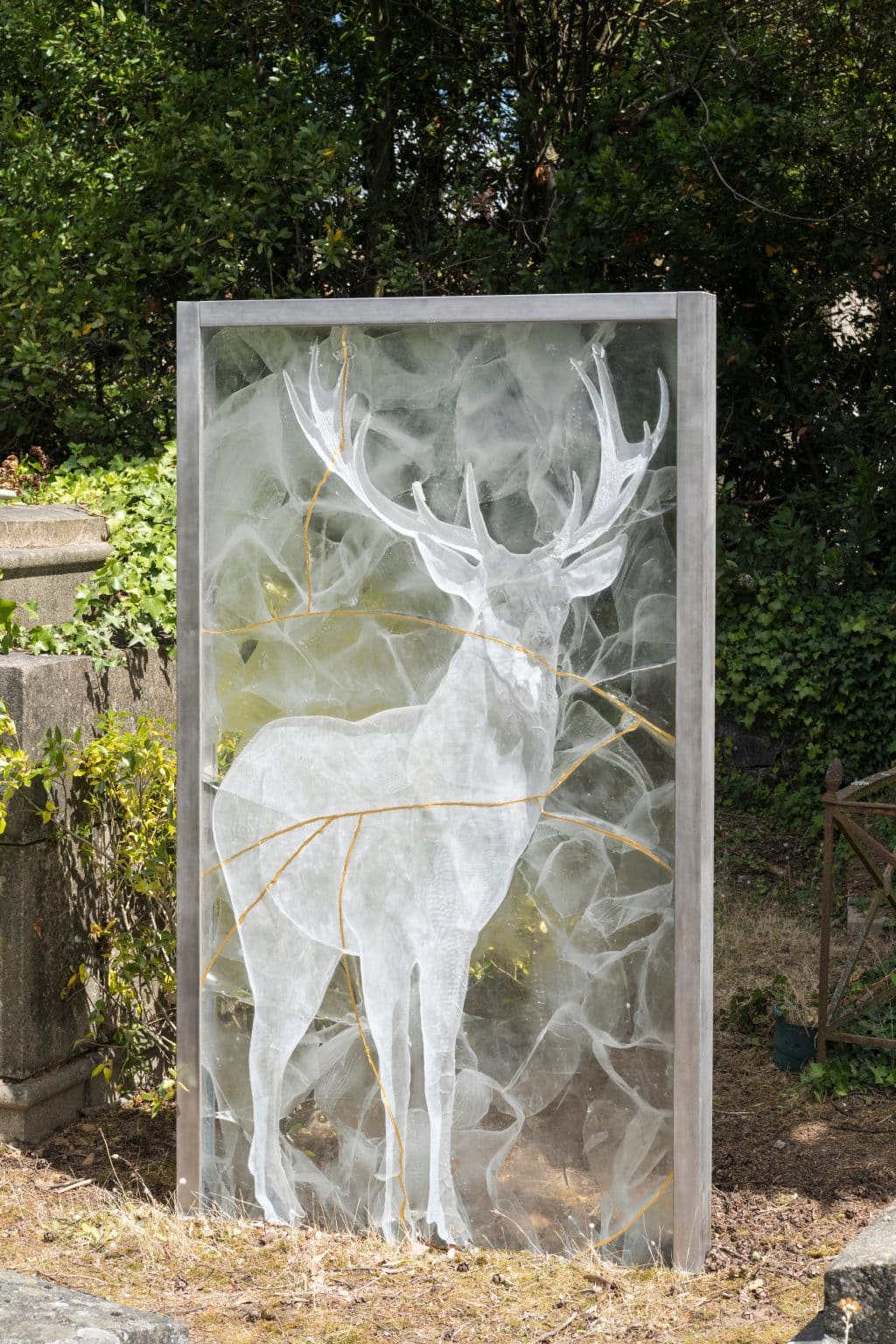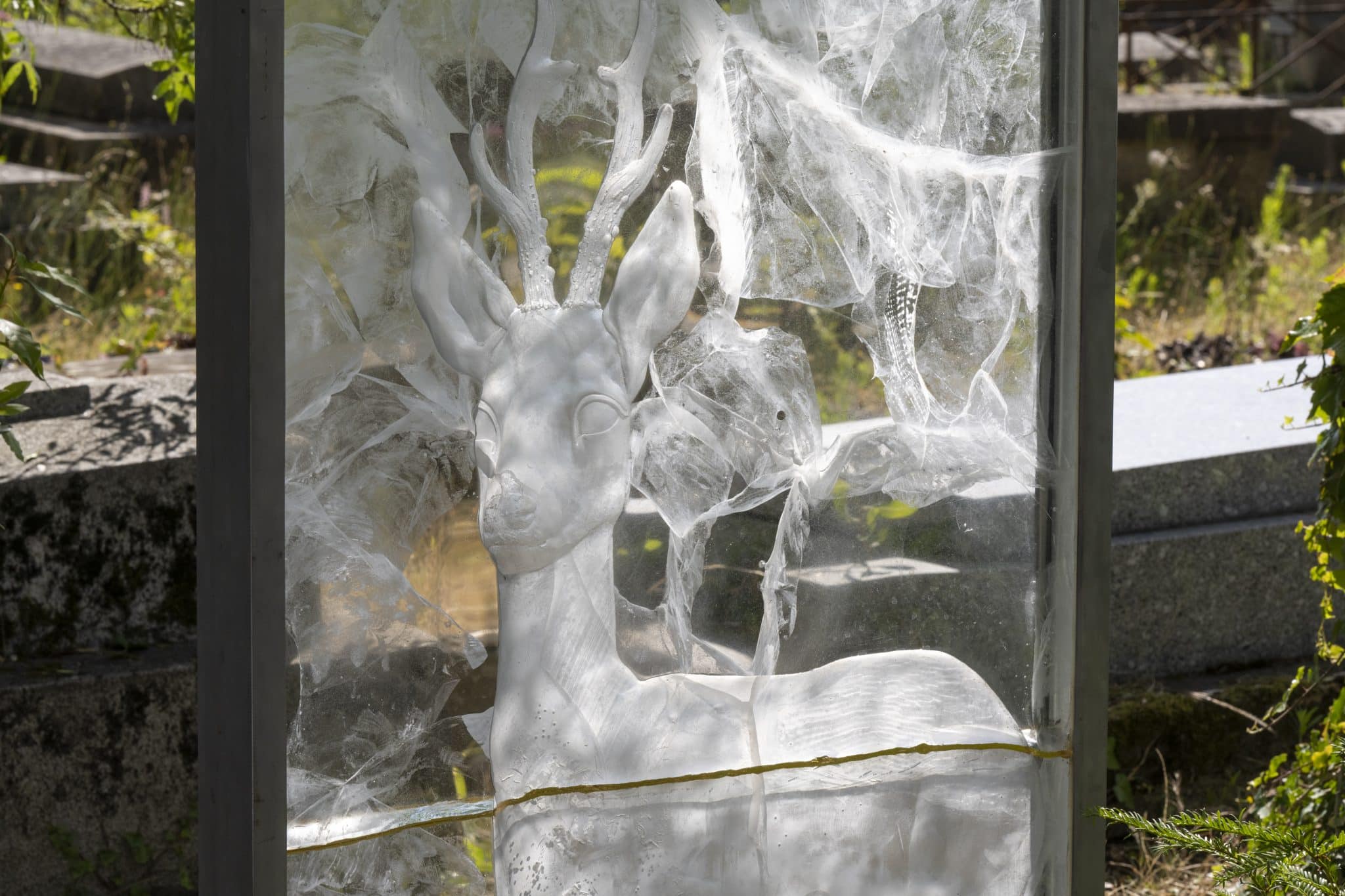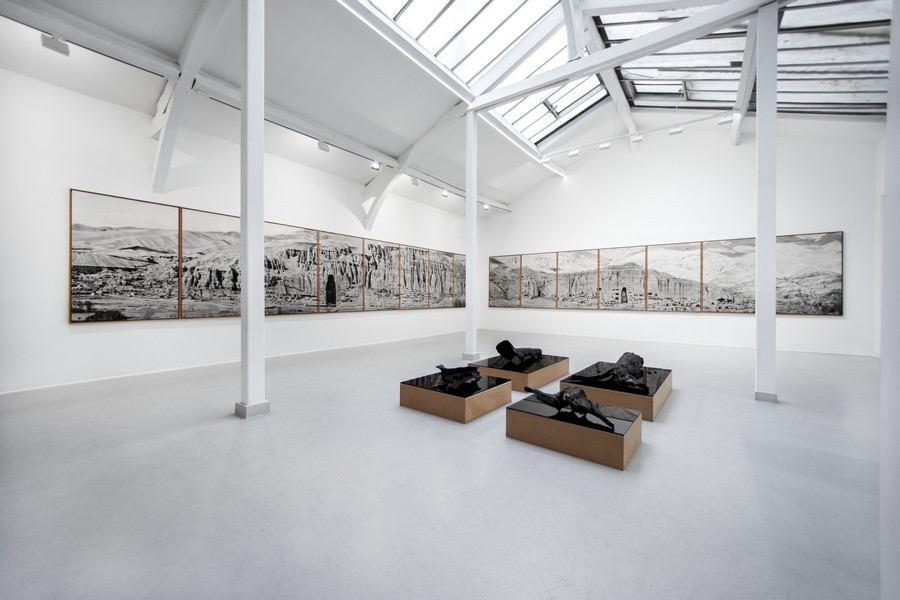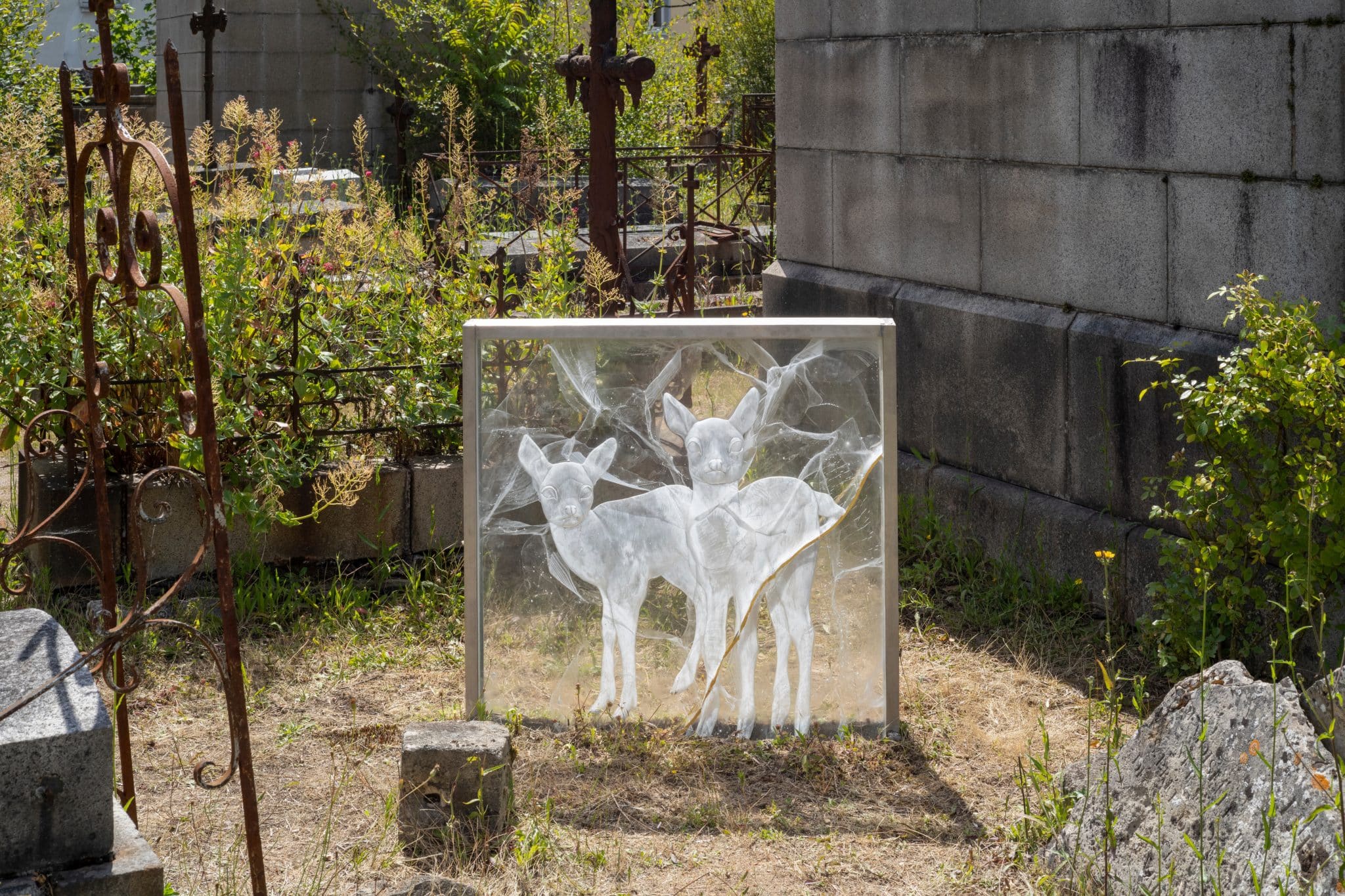
Pascal Convert links the living and the dead

About Pascal Convert's work in the Miséricorde cemetery in Nantes and the artist's solo show at the RX gallery in Paris from 4 February to 11 March.
Contemporary artworks are not only visible in art galleries, museums, parks or castles... A small diversions to cemeteries is now necessary, where they are not likely to be buried! The proof of this is Pascal Convert's permanent work in the Misécorde cemetery in Nantes. A memento mori through the spectral figure of deer, which has its place among the rich funerary heritage of this place considered as "the Père-Lachaise of Nantes", Didier Arnaudet reminds us this month in Artpress, the monthly and bilingual magazine dedicated to contemporary art.
The art critic and curator, who in 2022 presented the François Morellet exhibition at the Chasse-Spleen art centre in Moulis-en-Médoc (33), was invited to write a very interesting text for Artpress, combining his observations on the work of Pascal Convert and on the Miséricorde cemetery. The poetry of which obviously could not escape the attention of the man who has also published several books of poetry/fiction with Le bleu du ciel.
And since art is special in that it marvellously embraces all fields of expertise, we learn not only that the Miséricorde cemetery hosted its first burial in May 1793, but also that you have to be buried there in one of the neo-Gothic funerary chapels lining its monumental central alley to be counted among the greats of the world. And Didier Arnaudet evokes the writer Paul Nizan, whose maternal grandparents lived in Nantes and who largely evoked the city's cemetery in his first biographical novel, Antoine Bloyé, published in 1933. In particular, he described the mortuary monuments as if they were an exhibition of sculptures for sale held in an art gallery. "There were some in the Romanesque style, others in the Gothic style, others were topped by panelled domes, scaly domes like ceramic lizards. Others had lilies, irises and stone hair in the 1900s style. These were the kind of vaults you don't enter without wiping your feet and there were metal mats.
The author of the article confirms that "some of these monuments, statues or medallions are signed by sculptors such as Charles-Auguste Lebourg, Amédée Ménard, Sébastien de Boishéraud or Guillaume Grootaërs". But he also recommends venturing into the oldest part of the Miséricorde cemetery, where a rebellious space unfolds, a work of art in itself, as the vegetation has taken over, besieging and even covering the tombs and attacking the gates. "Despite the trials of erosion and breakage, the mineral opposes its abrupt theatricality, forbidding itself any compromise or conciliation, a chaotic, silent and resigned resistance. Here, finally, "impermanence, confusion and indefiniteness produce the expression of a fertile and inventive force".
With his decidedly beautiful pen, Didier Arnaudet succeeds in making us want to go and survey a cemetery... Not without adding to the announced joys that of unearthing the "negative bas-relief" entitled Miroirs des temps, a permanent work of art commissioned in 2022 from Pascal Convert by the Voyage à Nantes, this programme of works of art in the public space, designed to reveal the city's heritage. A stag, a roe deer, a doe and two fawns appear in hollows, bathed in light, on glass slabs made by the contemporary artist with master glassmaker Olivier Juteau, "according to a precise and particularly innovative technical process". Like a mediation between the living and the dead.
|
|
 |
 |
"Each piece required several design phases and long modelling, preparation and firing times," Didier Arnaudet explains to Artpress readers. "The impression that emerges combines the qualities of surprise and the seduction of the mirror-like surface. Each animal, recessed in the glass, captures the visitor in its gaze of benevolent clarity and accompanies him with sustained attention in all the preliminaries of the approach and the encounter."
For not only is it necessary to approach a work of art, whether painting or sculpture, but it is also necessary to succeed in meeting it. This stag, this roe deer, this doe and these fawns are there, "surprisingly present, elementary and fabulous, surrounded by a drape of mist, strengthened by an imagination in which one does not get lost, and bearing the wounds of the glass, underlined with gold, according to the Japanese technique of kintsugi which sublimates the breaks in ceramics. The author Didier Arnaudet has tested it: the convergence that the artist Pascal Convert succeeds in creating with his works of art between the history of a place and the memory of a buried past, which has come back to the surface of a present, has an extremely soothing influence on the mind.
The exhibition of recent works of art for sale by this archaeologist of architecture, childhood, history, the body, times... currently occupies the entire RX art gallery in Paris, until 11 March. It is entitled "Les Voix qui se sont tues", and it is the first solo show that the gallery has devoted to this French artist that it now represents. Curated by Henri van Melle, a specialist in the contemporary art scene, Pascal Convert presents a body of work ranging from bas-relief to photography, including the crystallisation of objects. Like testimonies of the past, they highlight personalities, events or places that have been deprived of their essence. Thanks to his multiple creative processes, Pascal Convert makes these "voices that have been silenced" inalienable.

This is an opportunity to see that Pascal Convert's work is indeed "the exact opposite of anything that compresses meaning, of anything that is reduced to event-based frames", as the Artpress contributor so aptly puts it. "From the bronze bell of Mont-Valérien, Monument in homage to the hostages and resistance fighters shot (2002) to the Panoramic of the cliff of Bâmiyân (2016) where the two immense Buddhas were destroyed by the Taliban, from the Memento Marengo (2021), a life-size skeleton of Napoleon's horse, placed under the dome of the Invalides, from Memento Marengo (2021), a life-size skeleton of Napoleon's horse placed under the dome of the Invalides, above the Emperor's tomb, to the awakening capacity of the changing appearances of the red marmorite Pan#1 (2022), presented at the RX gallery, Pascal Convert associates history and time, restores to these two instances their density, their power and their depth, and shows that they can be infinite instruments of deepening and reverberation. "






































































